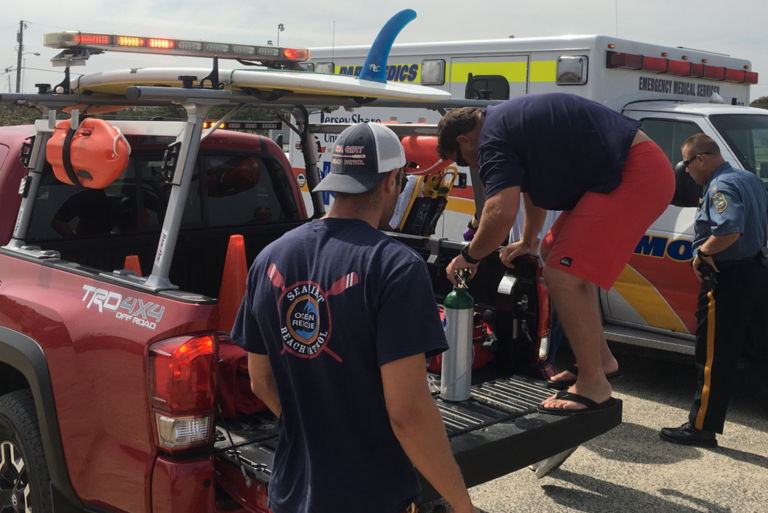Large waves, rip currents keep Shore lifeguards busy during offseason

Image courtesy of Sea Girt Beach Patrol (@sglifeguards via Instagram).
September is traditionally known as one of the best months of summer: typically sunny, mild days, cool nights, and warm ocean temperatures.
But it’s also when the ocean is more likely to be rough as it’s the peak of hurricane season. With most beaches no longer offering full service lifeguard protection, swimming in treacherous conditions becomes risky.
This year is no different.
After continuing large waves and long period swells first generated by Hurricane Irma and now from Hurricane Jose, lifeguards at the Jersey Shore have been busy this week.
Since Monday, first responders Monmouth County have responded to at least three incidents. On Monday, Asbury Park Fire Department rescue swimmers pulled a man from a rip current off an unguarded beach.
Authorities say the man was with two others who made it back to shore without assistance. All refused medical attention.
On Tuesday, Sea Girt lifeguards were called to assist a surfer who was having a medical issue. Authorities say the man, who was found laying on his surfboard along the shoreline and unable to speak, was transported to a local hospital for treatment.
And after sunrise Wednesday, an after hours lifeguard team was called to Spring Lake for a reported swimmer in distress. Six surfers ultimately rescued the man, who regularly swims offshore, authorities say.
With Hurricane Jose meandering offshore, the National Weather Service says ocean conditions will continue to be dangerous and “not worth the risk.”
Sea Girt Lifeguard Chief Timothy Harmon says “people can be sucked out quickly” in rough waters.
Here’s how to identify a rip current:
A channel of churning, choppy water.
An area having a notable difference in water color.
A line of foam, seaweed, or debris moving steadily seaward.
A break in the incoming wave pattern.
If caught in a rip current:
Stay calm.
Don’t fight the current.
Escape the current by swimming in a direction following the shoreline. When free of the current, swim at an angle—away from the current—toward shore.
If you are unable to escape by swimming, float or tread water. When the current weakens, swim at an angle away from the current toward shore.
If at any time you feel you will be unable to reach shore, draw attention to yourself: face the shore, call or wave for help.
WHYY is your source for fact-based, in-depth journalism and information. As a nonprofit organization, we rely on financial support from readers like you. Please give today.




